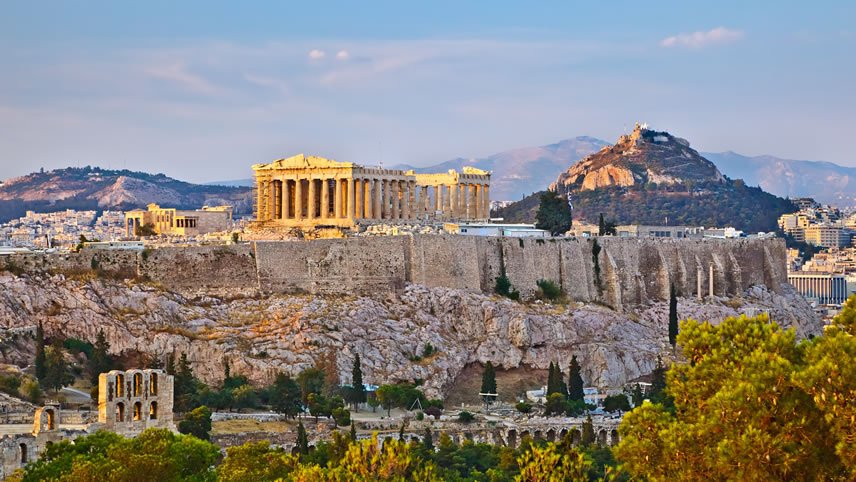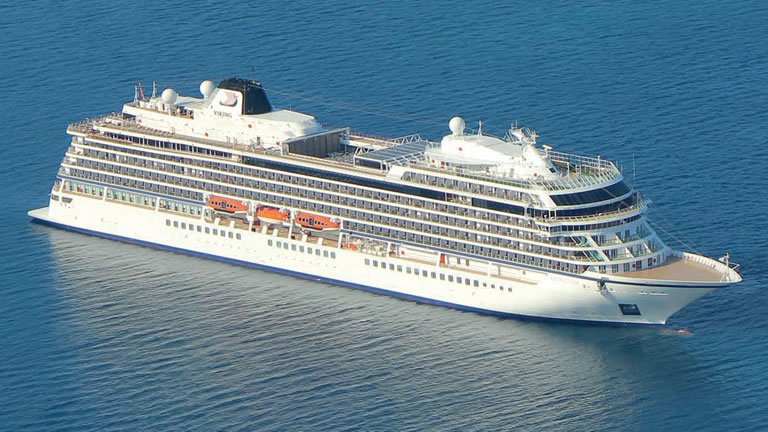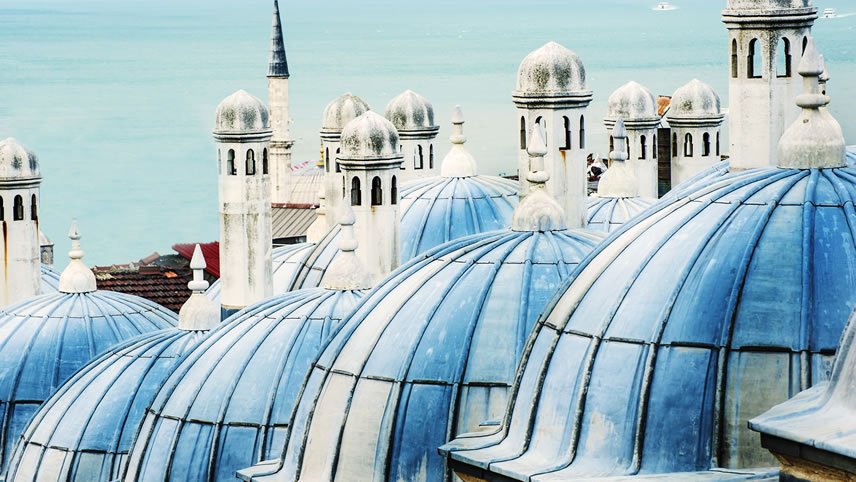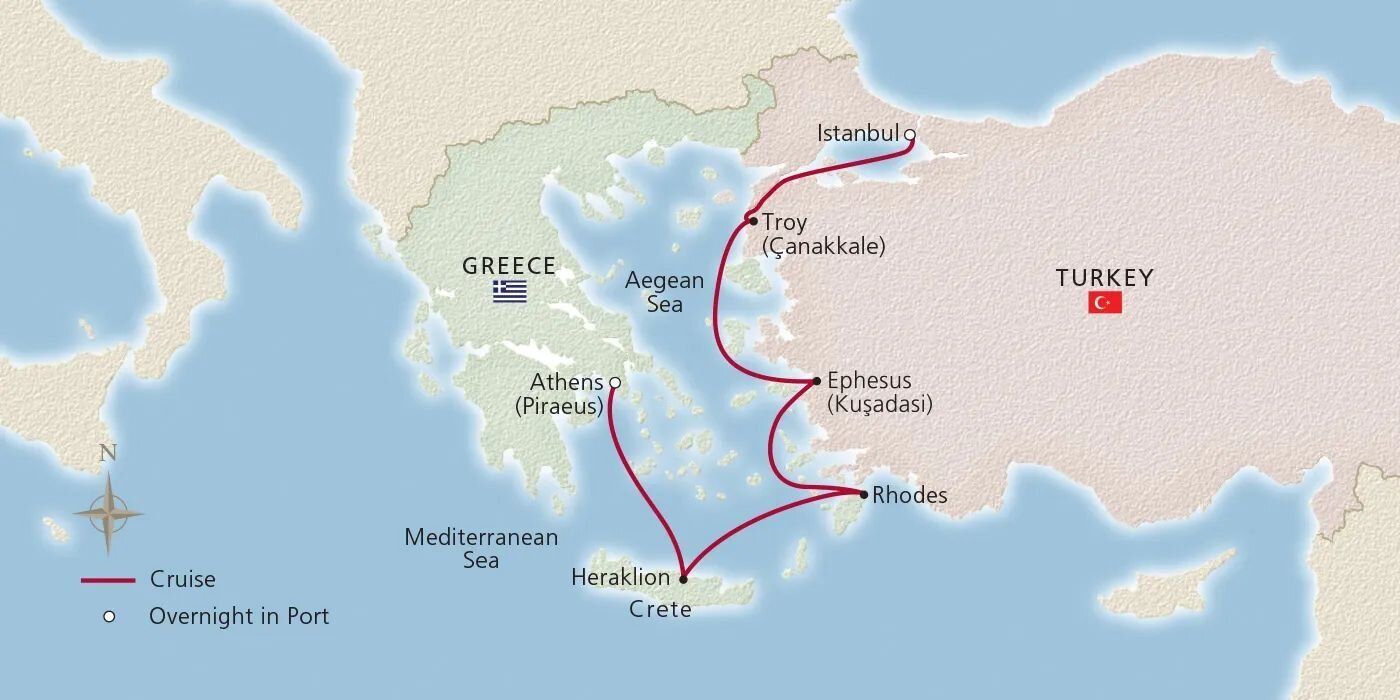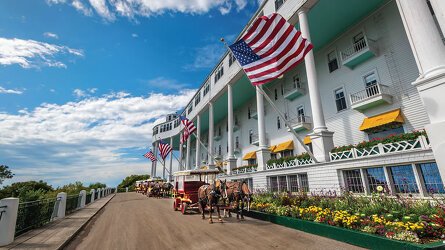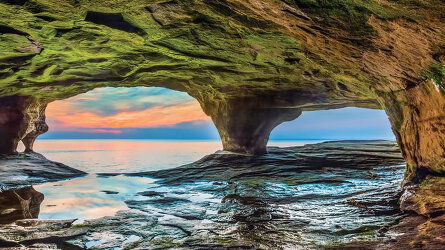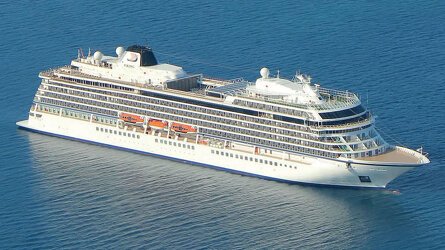Overview
Itinerary
Embark your ship and settle into your stateroom. Athens has been called the “birthplace of democracy.” Its legacy looms large from atop Acropolis Hill, the pinnacle of ancient Greece. This open air museum is an astonishing repository of once-mighty structures. From its colonnaded Parthenon—more than 2,600 years ago—revered Greek philosophers like Plato and Aristotle formulated new ideas of government and debated its role in civic life to captivated audiences. Remnants of spiritual life are also here in the several temples to Athena and Zeus.
For a more intimate experience of Athens, the charming Plaka District invites guests with its labyrinth of cobblestone lanes. Neoclassical architecture lines the narrow streets of the “Neighborhood of the Gods,” so named for its location. Browsing its shops or simply perusing its nooks and crannies are pastimes favored by visitors and locals alike. This historic area is the ideal setting in which to enjoy traditional small plates of mezes and a sip of ouzo.
Crete was home to the Minoans, Europe's earliest recorded civilization. Its capital, Heraklion, grew from the riches of the Venetian Empire, which ruled here for four centuries. Crete enjoyed a Renaissance building boom that helped bolster Heraklion as the region's most strongly fortified city. The island is blessed with generous beaches, soaring mountains and coursing rivers. It is also where the distinct mantinades—couplets of love accompanied by Cretan instruments—could break out at any number of cafés where patrons sip tsikoudia, a grape-based brandy distilled in the hills.
Rhodes is home to the Palace of the Grand Masters, a remarkable and sprawling fortification. Its historic quarter is Europe's largest active medieval town. Outside the city, forests of pine and cypress blanket mountain slopes; vineyards and groves of citrus and olive soak up the Aegean sun. The Knights of Saint John of Jerusalem conquered the island in the 14th century, bringing great wealth from the Holy Land. Under their rule, the city was reconstructed to mirror the medieval ideal. Many of the buildings from this era remain and make for rewarding strolls.
One of antiquity's best-preserved cities, Ephesus offers an unparalleled look into the lives of the ancients. Many of its ruins have endured from the time Ephesus was one of the largest metropolises of the ancient world. Excavations reach back to the 10th century BC, when this city hosted one of the Seven Wonders of the Ancient World—the Temple of Artemis. Today, Ephesus is still full of wonders: the towering facade of the Library of Celsus, the massive amphitheater that once sat 25,000 spectators and residences adorned with frescoes.
Çanakkale was an object of desire dating back to the ancient Greeks. Today, the nearby ruins of Troy, once a powerhouse of Asia Minor, provide a glimpse of the region's former glory. The remarkably preserved structures of this UNESCO World Heritage Site offer hints of life here in the days of Alexander the Great and the later Roman Emperor Augustus. But it is the fabled Trojan Horse that is most prominent here. In Homer's Iliad, the wooden steed gave ancient Greeks entry to the city during the Trojan War, and its legend is still very much alive today.
Istanbul exudes a fascinating mix of Western and Eastern cultures. Its strategic locale led to its role as a significant center of trade—eventually becoming a cultural crossroads along the world-famous Silk Road. One of the city's stunning centerpieces is Hagia Sophia, founded as a basilica, converted to a mosque, then a museum; it is now a mosque again and features exquisite mosaics and frescoes. The city's Grand Bazaar offers a rich taste of Turkish culture, from a vast selection of carpets and fabric to luscious dates and the local sweet favorite, Turkish Delight.
Straddling Europe and Asia across the Bosphorus Strait, no other city in the world bridges two continents. Istanbul's history is evident on every corner, from the cascading domes of the Blue Mosque to the courtyards of the Topkapi Palace. Visitors and locals alike flock to the European districts of Karaköy and Galata to browse shops and visit galleries, while across the strait lie the fashionable areas of Kadıköy and Moda. At night, the Old Town's buildings illuminate the skies, and across the Sea of Marmara, twinkling lights of ships follow a trail to the Asian continent. After breakfast, disembark your ship and journey home.
Life Onboard Viking Jupiter
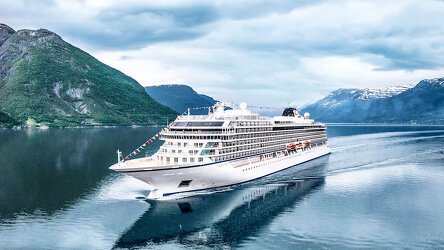
Launched in 2019, the Viking Jupiter is Vikings' newest all-veranda ship, part of a fleet of award winning, state of the art ships incorporating all the comforts & luxuries you would expect from Viking. Read more
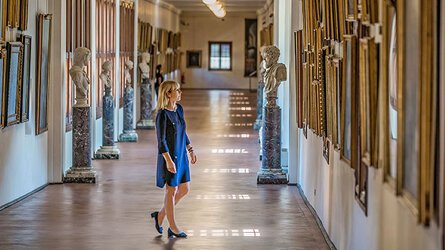
Viking are destination experts. With no casinos or children on board, you can be assured that the focus is firmly on enrichment and education. Read more

After a day of exploration or just to enhance the relaxation of a day at sea, the on-board Spa will leave you feeling recharged and revitalized. Read more

Viking offer eight on board dining options. Beer, wine and soft drinks are available with lunch and dinner at no additional charge of fee. Read more

Viking proudly includes all that you need and nothing you do not. A variety of features and services valued at $200 per person per day are standard inclusions in your cruise. Read more

Viking include one complimentary shore excursion in every port of call. Enjoy exclusive entry to cultural treasures and seldom-seen collections around the world. Read more

Brochure
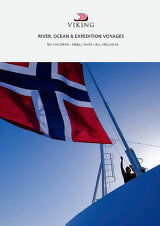
Viking River, Ocean & Expedition Voyages (2025-27)
Availability
 USD
Port charges, taxes and fees included.
USD
Port charges, taxes and fees included.
Tour & cruises prices are per person. Prices shown have savings applied, are subject to availability and may be withdrawn at any time without notice. Pricing and trip details are correct at this point in time, however are subject to confirmation at the time of booking and are subject to change by Viking. For cruise itineraries, cabin images are sourced from Viking. These should be treated as indicative only. Cabin inclusions, upholsteries and room layout may differ to the image(s) shown depending on the ship selected and your sailing dates.
